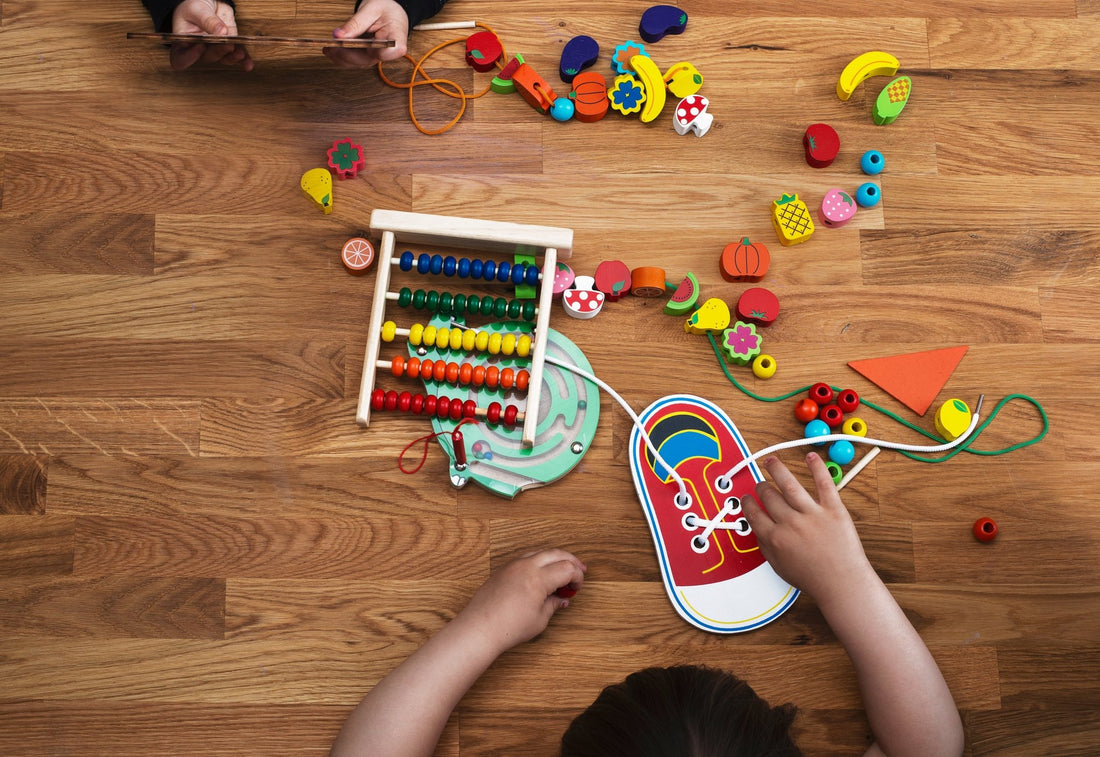
What is the Montessori Method?
Share
What is the Montessori Method?
Before we begin to learn about the Montessori method, let’s briefly talk about the history and how this teaching method came about.
Montessori education was first developed by Maria Montessori, an Italian physician and child expert, in the early 20th century. Maria Montessori worked closely with children of all ages and observed that all children were different and unique in their own way; therefore, one learning method would only be adequate for some children. Maria Montessori observed that the best way children learned things and developed skills was by letting the child lead his/her own way and interact freely with the environment with little to no involvement from the adult.

Now that we learned about how Montessori started, let’s understand what Montessori is and how it works.
Montessori method of education is different from a traditional top-learning approach. The idea of Montessori learning is that every baby or child is seen as unique, with unique ways of learning, unique interests, and unique timelines for learning. The Montessori method recognizes this by providing an environment that is tailored to meet the individual needs, interests, and developmental stages of each baby and child.

The Montessori method emphasizes the child and the environment, prioritizing the individual development and needs of each child. A Montessori education is a holistic approach to learning that recognizes and prioritizes the following:
- The baby or child has the freedom to interact with the environment.
- Babies and children are free to explore their environment, learn, and grow at their own pace.
- The child can work independently or with other children in the activities.
- The teacher stands at the back and observes, ready to help and guide the child without directly intervening.
- The teacher supervises the activities and sees who needs to change to a new activity.
- Children are normally mixed in activities of all ages where older children serve as role models and help younger children with activities. This way also older children reinforce their own learning.
The Montessori method can be started in babies as early as newborns by communicating with your baby, telling them what you are doing and how ( feeding the baby, holding the baby, bathing the baby, changing the baby, etc), this gives you (the parent) a good time to check your baby’s hearing, response to stimulus and the environment, etc. As babies grow, you must continue communicating with your baby, speaking slowly and moving your mouth slowly to let your baby absorb everything, sing to them so they learn tones, sounds, pitch, and volume. This way your baby starts to learn and become familiar and comfortable with his/her environment. As your baby grows, you can start to include activities at home where they can start to explore the environment by themselves and start creating independence (We will discuss more about Montessori Activities at home in our coming blogs) and eventually continue reinforcing the Montessori method during their toddler years.
To sum up, the Montessori method focuses primarily on the baby/child and their interaction with the environment. The Montessori approach embraces the uniqueness of every child and how their way of learning is different from child to child. Montessori emphasizes on different activities and teaching methods tailored to each child with minimum intervention from the teacher (parent or adult).
Did you like what you read? Subscribe (found at the bottom of our website) to our newsletter to learn more about Montessori and other baby and parenting topics.
Stay tuned for our next topic: The Benefits of Montessori Education pt1.
Don't forget to follow us on TikTok, Instagram and Facebook for update and more.

